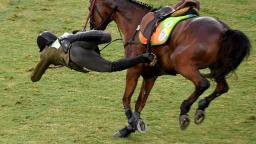Sarah Robb O’Hagan
Sarah Robb O'Hagan is described by the media as everything from “Superwoman undercover" to “The Pied Piper of potential." She is an executive, activist, entrepreneur, and currently the CEO of Flywheel Sports. Formerly, O'Hagan served as the president of luxury health club Equinox, the global president of Gatorade, a GM and marketing director at Nike, and the marketing director of the Virgin Entertainment Group. The founder of the “Extreme Living" movement, she is a rare blend of fierce businesswoman, cheerleading Mom, passionate women's advocate, and high-energy motivator. In her new book Extreme You, due out in spring 2017, Sarah lays out a roadmap for becoming the most “extreme" version of yourself by operating at the edge of your potential and by building highly-collaborative, focused, and successful teams and corporations. Drawing on her decades experience at some of the world's most influential brands, she shares practical takeaways including how to make failure your fuel, discover your most competitive playing field, get out of line rather than always following conventional wisdom, and bring out the “extreme" in others.
Sarah personally oversaw the development of several breakthrough innovation efforts throughout her career, including: the Virgin Atlantic Airways-Austin Powers movie collaboration in which the airline was rebranded “Virgin Shaglantic," the roll-out of the game-changing Nike Plus technology developed alongside Apple, the transformation of Gatorade from a declining sports drink into an innovative sports performance company exemplified by the highly-successful G Series line, and Equinox's revolutionary shift from a bricks-and-mortar gym to an always-on, digital-first fitness business. She also experienced what she calls a “canyon of career despair" in her 20s, using major back-to-back failures to learn, to grow and to motivate herself forward to eventually lead a $5 billion global business by the age of 38.
Robb O'Hagan has been named twice to Forbes magazine's list of the “Most Powerful Women in Sports," named a “Woman to Watch" by Ad Age magazine, dubbed one of the “Most Creative People in Business" by Fast Company, and named to “40 Under 40" lists by Sports Business Journal, Crain's Chicago Business, and Sports Goods Business.
Sarah is a passionate advocate for an active lifestyle and believes the lessons learned from sports and fitness can be applied to improve performance in the workplace. She has served on Hillary Clinton's US State Department Council to Empower Women and Girls through Sports, and is a trustee of the Women's Sports Foundation. She is an active member of the World Class New Zealand Network, as she remains committed to helping the country's development, international competitiveness and economic growth. In 2014, she was awarded the Sir Peter Blake Trust Award for outstanding leadership.



